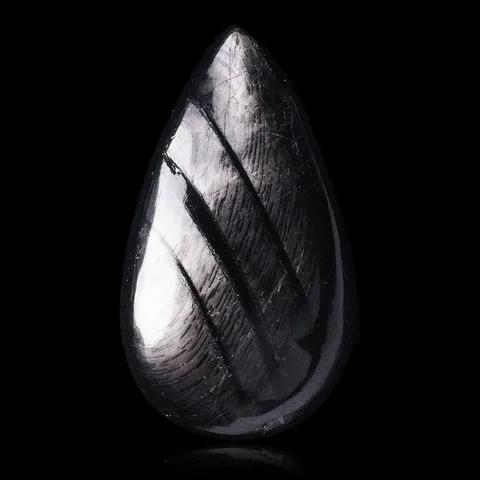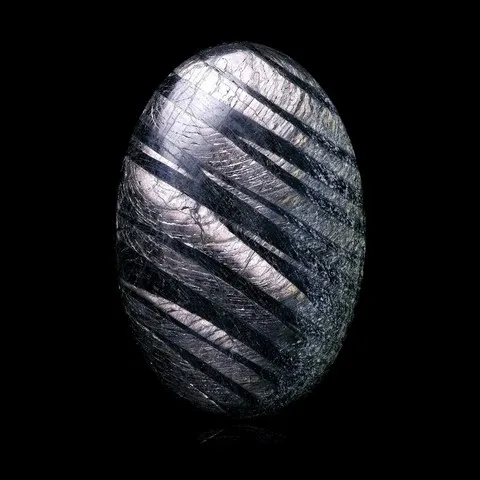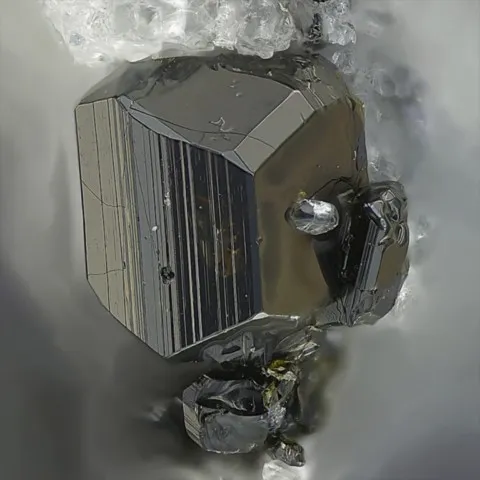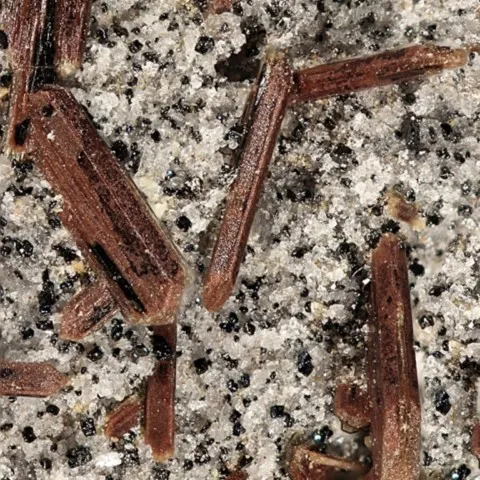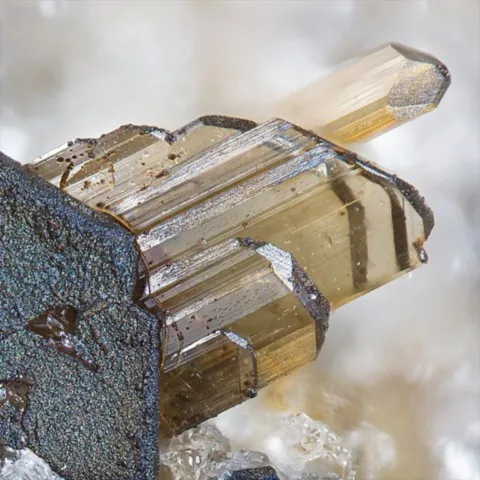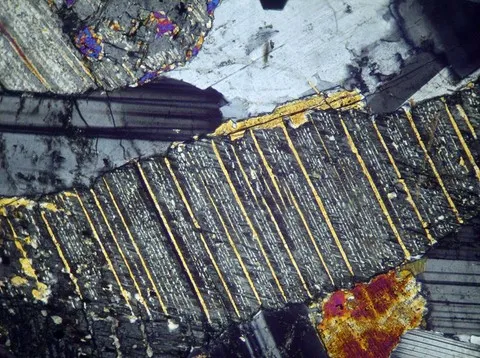HYPERSTHENE
Class : Silicates
Subclass : Inosilicates
Crystal system : Orthorhombic
Chemistry : (Mg,Fe)SiO3
Rarity : Common
Hypersthene is the intermediate term of the solid enstatite - ferrosilite solution, composed of 30% to 50% ferrosilite for 50% to 70% enstatite. It is an important mineral from the group of orthorhombic pyroxenes (or orthopyroxenes). Its name comes from the Greek huper (beyond) and sthenos (strength), due to its toughness superior to that of hornblende with which it was once confused. Hypersthene is a constituent of basic magmatic rocks (gabbros and norites, basalts), more rarely ultrabasic rocks (peridotites, pyroxenites), sometimes rocks which have undergone intense metamorphism (granulite, charnockites). Hypersthene commonly changes to amphibole (uralitization phenomenon). Net crystals are rare and only known in gabbroic pegmatites : they are then flattened prisms. Hypersthene occurs more generally in fibrous, lamellar, grainy or compact masses, dark green to brown-green in color, sometimes gray. It is a mineral that is used in ornamentation and jewelry for its silvery reflections.
Hypersthene in the World
Hypersthene in France
This mineral species is found in the basic volcanic rocks of the Massif Central : at Mont Coupet (Haute-Loire), at Murat (Cantal) as well as at Piton des Neige (Réunion) and Mount Pelée (Martinique). It is also found in the gabbros of Saint-Brieuc (Côtes-d'Armor) and Château-Lambert (Haute-Saône).
Twinning
No twin known for this mineral species. On the other hand, orthopyroxenes such as hypersthene may present exsolutions of clinopyroxene (augite). These oriented exsolutions are often confused with twins and are responsible for the silvery reflections of this very beautiful ornamental stone.
On the left, a photo of an orthopyroxene exsolution in augite (yellow bands) in analyzed-polarized light.
Fakes and scams
No fake recorded for this mineral species.
Hardness : 5 to 6
Density : 3.4 to 3.9
Fracture : Irregular
Trace : White to grey
TP : Translucent to opaque
IR : 1.669 to 1.773
Biréfringence : 0.011 to 0.018
Optical character : Biaxial -
Pleochroism : None
Fluorescence : None
Solubility : Hydrochloric acid
Magnetism : Paramagnetic
Radioactivity : None

